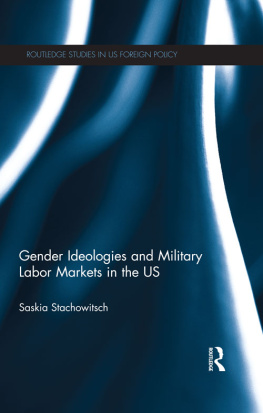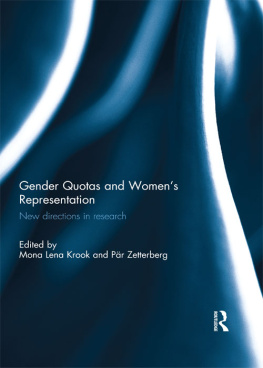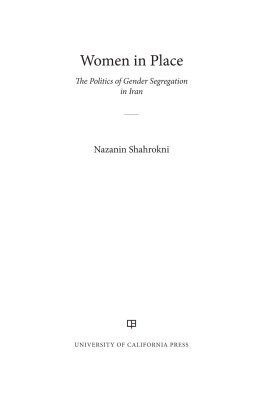Agrarian Women, the Gender of Dairy Work, and the Two-Breadwinner Model in the Swedish Welfare State
In this volume, Lena Sommestad explores the significance of rural womanhood in the formation of Swedens gender-egalitarian welfare state in the early twentieth century. Drawing on a rich array of documents, photographs, and interviews with women and men, she analyzes the changing gender division of labor in dairying and illuminates the dynamic processes and debates that shaped industrial workplaces. The book demonstrates the importance of rural womens gainful labor and organized activism to Swedens citizenship-based social policies, which enabled married women to combine childrearing with breadwinning.
Lena Sommestad earned a PhD in Economic History from Uppsala University, where she also served as a professor. In 2002, she went into politics, holding elected and appointed positions in the Swedish government. Her primary interests are in gender equality, sustainable development, and the social democratic model of the welfare state.
Grey Osterud holds a PhD in American Civilization from Brown University. In addition to working as an editor, she has written two books and numerous articles on farm women in nineteenth- and twentieth-century New York and coedited a book on rural womens studies. Her recent work focuses on Scandinavia.
First published 2019
by Routledge
52 Vanderbilt Avenue, New York, NY 10017
and by Routledge
2 Park Square, Milton Park, Abingdon, Oxon, OX14 4RN
Routledge is an imprint of the Taylor & Francis Group, an informa business
2019 Taylor & Francis
The right of Lena Sommestad to be identified as author of this work has been asserted in accordance with sections 77 and 78 of the Copyright, Designs and Patents Act 1988.
The right of Grey Osterud to be identified as the editor and translator of this work has been asserted in accordance with sections 77 and 78 of the Copyright, Designs and Patents Act 1988.
All rights reserved. No part of this book may be reprinted or reproduced or utilised in any form or by any electronic, mechanical, or other means, now known or hereafter invented, including photocopying and recording, or in any information storage or retrieval system, without permission in writing from the publishers.
Trademark notice: Product or corporate names may be trademarks or registered trademarks, and are used only for identification and explanation without intent to infringe.
Library of Congress Cataloging-in-Publication Data
A catalog record for this title has been requested
ISBN: 978-0-367-11072-7 (hbk)
ISBN: 978-0-429-02466-5 (ebk)
Typeset in Times New Roman
by codeMantra
First and foremost, I owe an enormous debt of gratitude to my colleague and friend Grey Osterud, who proposed that I consider an English translation of my Swedish publications on agrarian women, the gender of dairy work, and the two-breadwinner model in the Swedish welfare state. Grey introduced me to American rural womens history in the early 1990s, and she translated and edited this work. We have worked together to develop this synthesis for English-language readers who are not familiar with Swedish history but are interested in the themes this book explores.
I am grateful to the academic colleagues who gave me support and advice when I wrote my original books and articles, including Ulla Wikander, Mats Morell, Maths Isacson, Lynn Karlsson, Sally McMurry, Irne Andersson Flygare, and Christina Bergqvist. Bo Malmberg and Hannes Malmberg have contributed to the implementation and presentation of my statistical analyses. Stig Sderlind, a cartographer who has designed maps for many books on Swedish history, found usable maps of Swedens traditional provinces and its counties during the interwar period and designed the two maps in this book.
This study could never have been written without the stories and recollections shared by Swedish agrarian women and former dairymaids, dairymen, and dairy workers. I am grateful for assistance from Lennart Gransson, local historian from the Food Workers Union in Uppsala, and Albert Magnusson, local historian from Skellefte, who organized adult study circles on the dairy industry and shared their results and networks.
My research was facilitated by expert assistance from Swedish archives, libraries, and museums, including the Swedish National Archives (Riksarkivet); Arla Foods archive, Centre for Business History; Digitalt Museum; Nordiska Museet; Skellefte Museum; Upplandsmuseet; and Uppsala Industriminnesfrening. Funding was received from Uppsala University, Jan Wallanders Research Foundation, Swedish Ministry of Labor, Swedish Council for Research in the Humanities and Social Sciences (HSFR), Swedish-America Foundation, Royal Swedish Academy of Agriculture and Forestry, and Fredrika Bremer Frbundet.
I am grateful to the publishers of my previous works from the larger project on which parts of this book are based, which are as follows:
Frn mejerska till mejerist: En studie av mejeriyrkets maskuliniseringsprocess [From dairymaids to dairymen: A study of the masculinization process in skilled dairy work]. Lund: Arkiv frlag, 1992, second edition 1995.
Mjlk och mnniskor: Liv och arbete vid Uppsala mejeri 18711985 [Milk and people: Life and work at Uppsala Dairy, 18711985] (with Nils Bjrk, Christer Brundin, Lennart Gransson, Ann Hammarborg-Mattsson, Maths Isacson, Gran Lidbom, Stig Soneryd, Jan Sfstrm, and Ann-Britt Whlin-Lindberg). Uppsala: Hallgren and Fallgren Studiefrlag AB, 1987.
Able dairymaids and proficient dairymen: Education and de-feminization in the Swedish dairy industry. Gender & History 4, no. 1 (Spring 1992): 3448.
Gendering work, interpreting gender: The masculinization of dairy work in Sweden, 18501950. History Workshop Journal 37 (Spring 1994): 5775.
Creating gender: Technology and femininity in the Swedish dairy industry. In Women workers and technological change in Europe in the nineteenth and twentieth centuries, ed. Gertjan de Groot and Marlou Schrover, 15169. London: Taylor and Francis, 1995.
Jordbrukets kvinnor i den svenska modellen [Agrarian women in the Swedish model]. Historisk tidskrift, no. 4 (1995): 50827.
Farm daughters and industrialization: A comparative analysis of dairying in New York State and Sweden, 18601920 (with Sally McMurry). Journal of Womens History 10, no. 2 (Summer 1998): 13764.
Welfare state attitudes to the male breadwinning system: The United States and Sweden in comparative perspective. Special issue, The rise and decline of the male breadwinner family? ed. Anglique Janssens, International Review of Social History 42, Supplement 5 (1997): 15374.
Human reproduction and the rise of welfare states: An economic-demographic approach to welfare state formation in the United States and Sweden. Scandinavian Economic History Review 46, no. 2 (1998): 97116.
Finally, I thank the anonymous reviewers, whose suggestions improved this work; Max Novick, my editor at Routledge, who provided sound advice; and the rest of the Routledge staff, for their expert work.
Lena Sommestad
Halmstad, Sweden
July 2018






